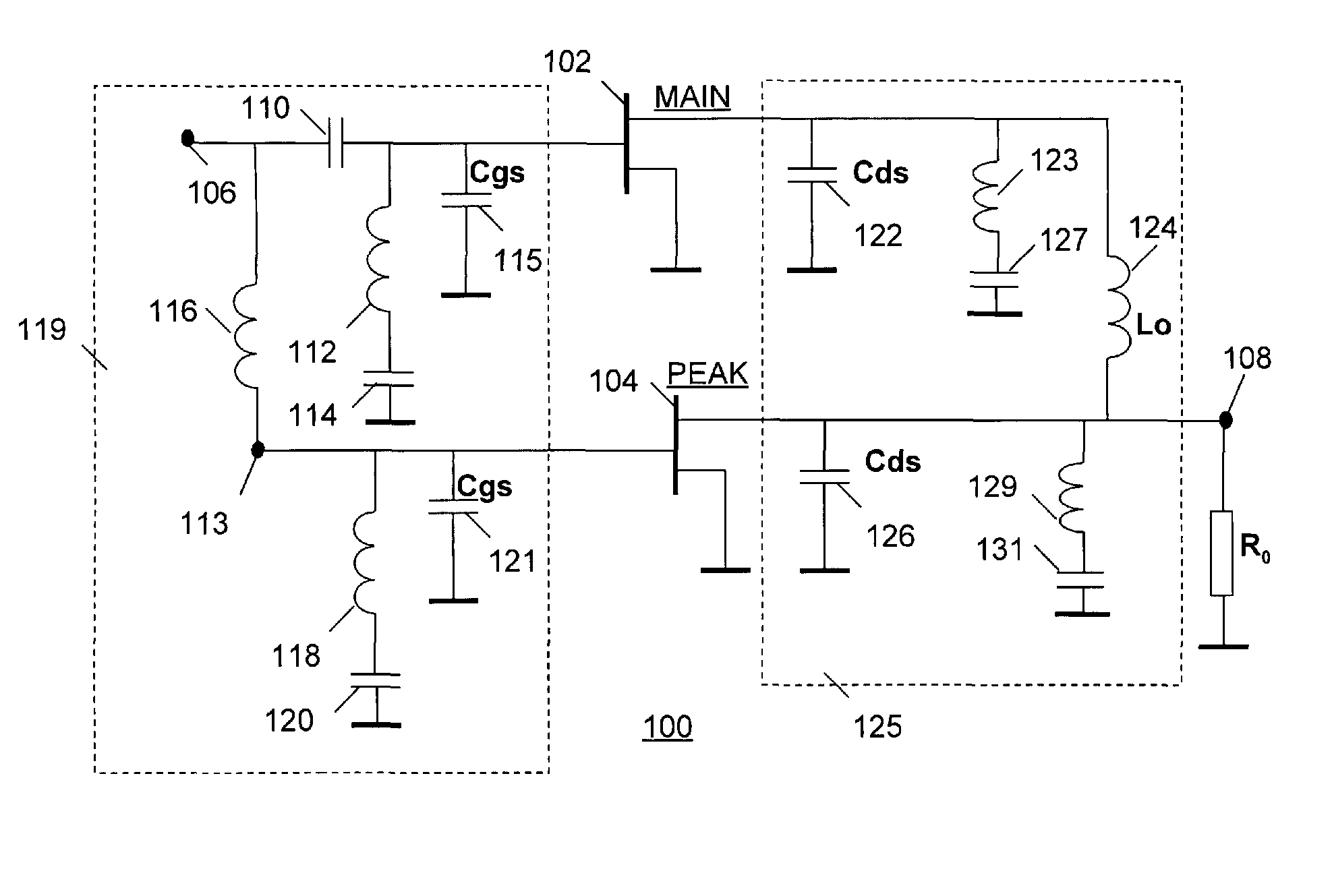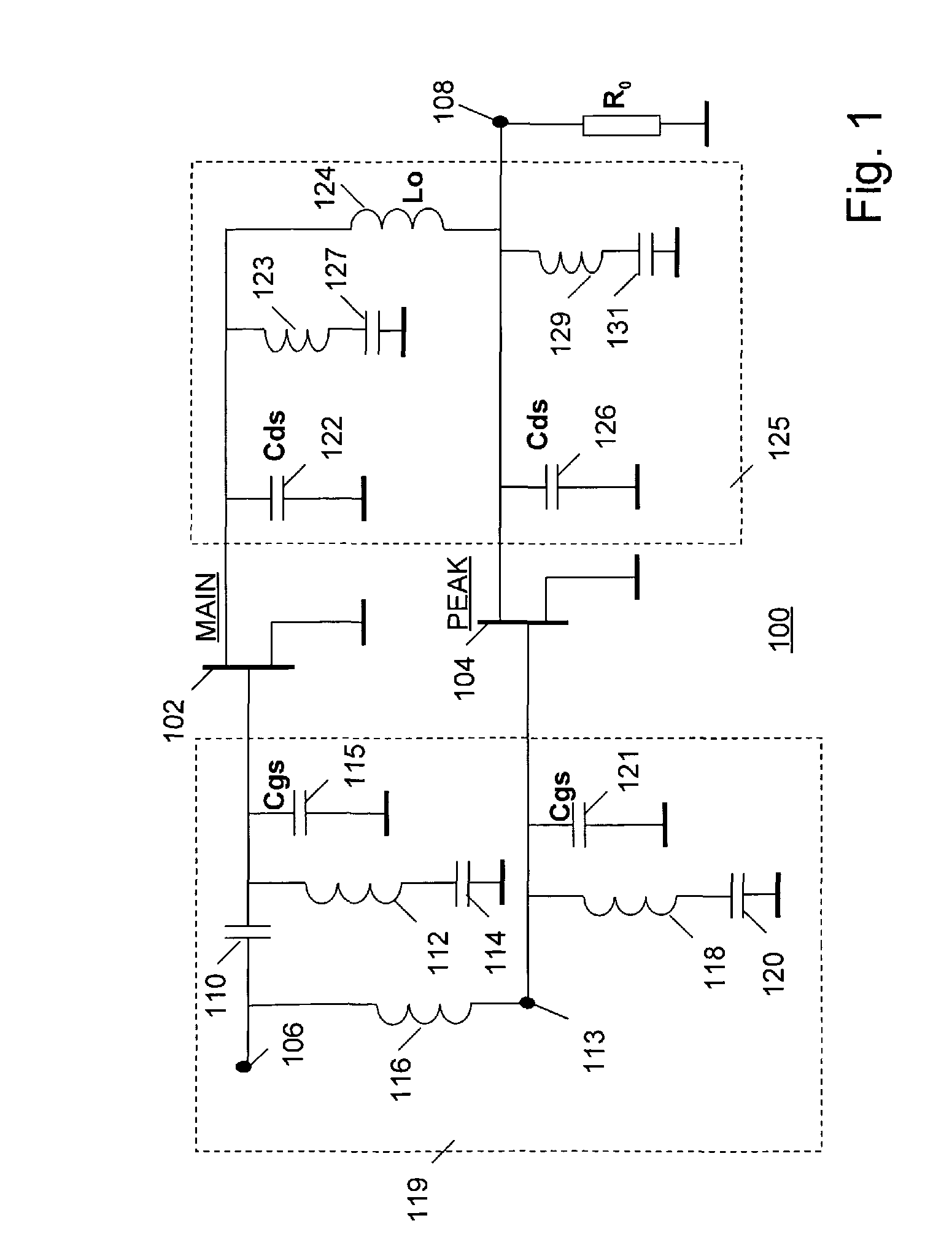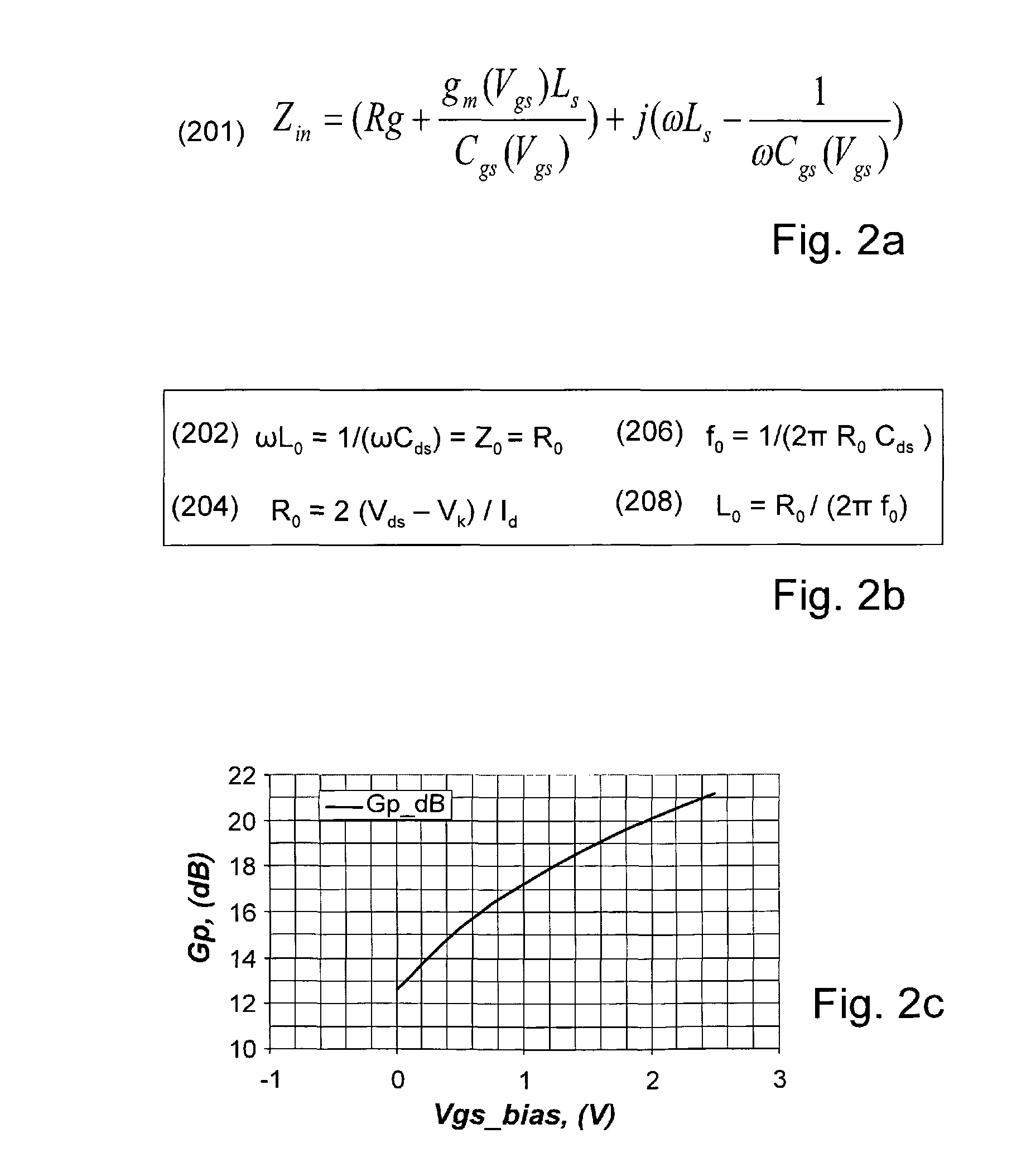Doherty amplifier with input network optimized for MMIC
a technology of input network and amplifier, which is applied in the direction of amplifier combination, rf amplifier, multiple-port network, etc., can solve the problems of power-dependent power split ratio, power-dependent phase shift of input network, and difficult implementation of high-quality power-divider in mmic, so as to reduce the performance of doherty amplifier, and reduce the negative effect of variable input impedan
- Summary
- Abstract
- Description
- Claims
- Application Information
AI Technical Summary
Benefits of technology
Problems solved by technology
Method used
Image
Examples
Embodiment Construction
[0032]As known, a classical Doherty amplifier has two amplifying stages arranged in parallel and of the same power capability. The first one of the stages (main stage) operates in a class-AB amplifier mode and the second one (peak stage) operates in a class-C amplifier mode. These stages are separated at their inputs and at their outputs by 90° phase-shifting networks. The output phase-shifting network has a specific characteristic impedance Z0 which must be equal to the optimal load impedance RLm of the main stage. The input signal is split so as to drive the two amplifiers, and a summing network, known as an “impedance inverter” or a “Doherty combiner”, is operative to: a) combine the two output signals, b) to correct for phase differences between the two output signals, and c) to provide an inverted impedance at the output of the Doherty amplifier with respect to the impedance as seen from the output of the main stage.
[0033]In the embodiment of FIG. 1, the state of the art integr...
PUM
 Login to View More
Login to View More Abstract
Description
Claims
Application Information
 Login to View More
Login to View More - R&D
- Intellectual Property
- Life Sciences
- Materials
- Tech Scout
- Unparalleled Data Quality
- Higher Quality Content
- 60% Fewer Hallucinations
Browse by: Latest US Patents, China's latest patents, Technical Efficacy Thesaurus, Application Domain, Technology Topic, Popular Technical Reports.
© 2025 PatSnap. All rights reserved.Legal|Privacy policy|Modern Slavery Act Transparency Statement|Sitemap|About US| Contact US: help@patsnap.com



